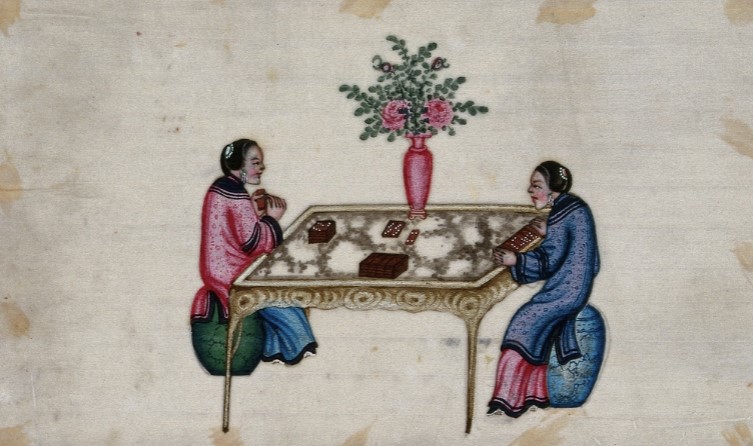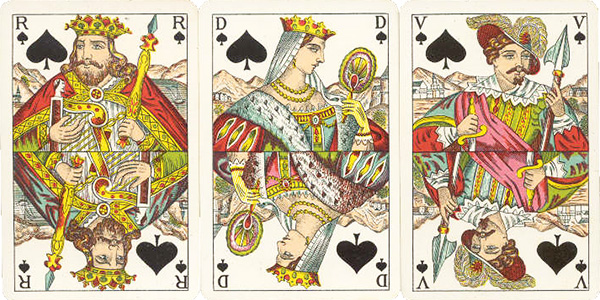
The origins of playing cards are, till today, a widely debated topic, more less its significance. Many scholars over the years have inferred that card games were developed in China as early as the 9th century. Some others believe card games were crafted alongside certain tile games like mahjong and dominos and we’re typically reserved for lavish nobles.
Nevertheless, what isn’t debated is the prominence and impact that card games would gain over the next few centuries. From the handcrafted and limited card options to today’s variety, playing cards have seen many changes on their way. Moving on, we’re taking a peak at the ancient scenes of card games.
Ancient Beginnings
The earliest card games known are linked to Chinese and Egyptian origins. Chinese playing cards are widely believed to have been invented during the Tang Dynasty, around 618 AD. These games featured some remarkable designs and illustrations that were all hand-painted. The most prominent examples include Yezi ge, which translates to ‘leaves’, ma diao, and a few others.
Characteristically, these early card game options were more like narrow slips of paper, resembling dominoes, with hand-painted dots and symbols that are now only of ancient relevance. On the other hand, Egypt being one of the first regions to adopt playing cards can also boast of ancient variants. The earliest ones dating from the 1200s were also slim papers with coins, polo sticks, cups, and sword paintings.
Overall, especially within the ancient Egyptian scene, the earliest playing cards possessed some real striking artwork, unlike some later European options.
Medieval Europe and the Spread of Cards

Owing to their social and gambling appeal, card games would later reach most parts of Europe, where they derived most of their cultural significance. Late in the 14th Century, playing cards slowly became a sensation at modest taverns and Europe’s most opulent saloons. By the 15th century, card games became engraved in many European cultures.
Unlike the culture of early Chinese card games, European games promoted social interactions between commoners and royalty alike. At this time, the use of card games for gambling purposes became the order, as they were considered insipid without wagers. Eventually, these earlier card gambling encounters would set the tone for today’s gambling scene.
Especially with modern standard casinos as obtainable at https://casinorix.com/ca/ card games are now considered a symbol for high wagers. Overall, card games became a major pillar of the social fabric on arrival at the medieval Europe scene. Also, in the course of its spread in medieval times, card games evolved from the original swords, coins, and cup symbols to the popular hearts, diamonds, spades, and clubs we have today.
The Renaissance and the Birth of Modern Card games
As hinted earlier, playing cards, moving into the early Renaissance period, started undergoing proper modernization. Innovations were implemented, styles were changed and strategies were developed, as today’s modern games started taking shape. By now, most early playing cards only served as a base from which better-structured, better-strategized alternatives were developed.
One could say that the Renaissance contributed to the transition of card games as being an era of refinement and development of more widely acceptable card games. As such several new games emerged during this period, including prominent ones like Tarot cards and Piquet.
Industrial Revolution and the Rise of Standardization
Long last, the economic appeal of playing cards would attract many industrial inputs. These have been implemented through mass printing, with upgraded methods like lithography. In the end, inputs like these and more have increased the affordability and accessibility of playing cards all over.
Also, the widespread use of standardized decks has further promoted certain card games. This is possible because ease of use and consistency are pretty much guaranteed by a standard-made card deck, notwithstanding the game variant.
Modern Games, Innovation, and Strategies
Today, card games come with the most diversity and structure that has ever existed. Not only have new games been crafted, but new tricks and strategies have been developed for the long-existing ones. Some argue that card games, due to acute modernization have become complex. However, these playing cards needed to evolve, adapt, and spread across more cultures and regions.

Comments are closed.